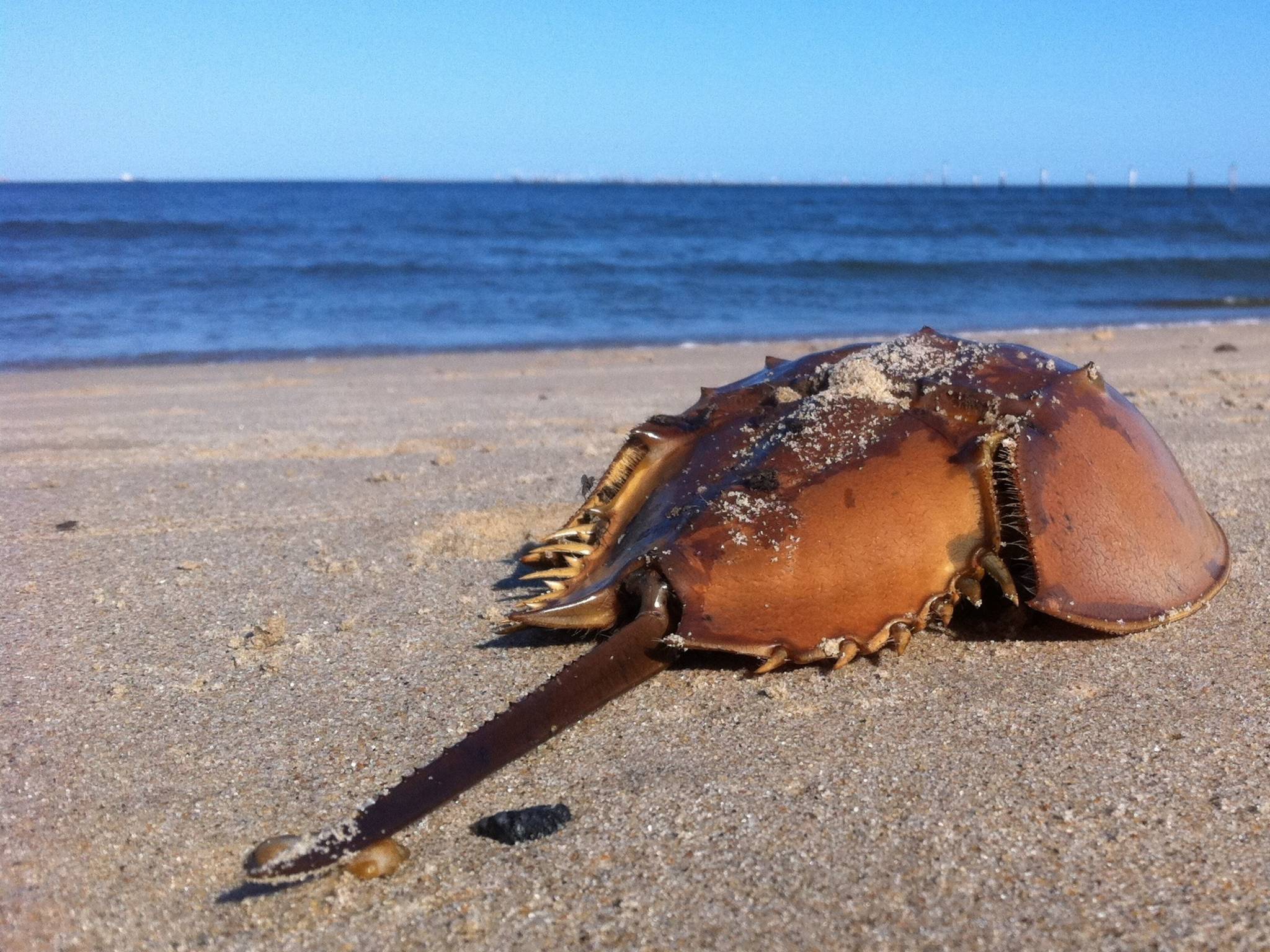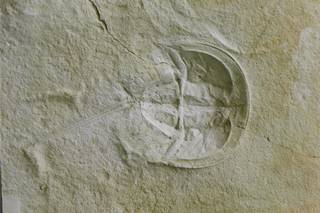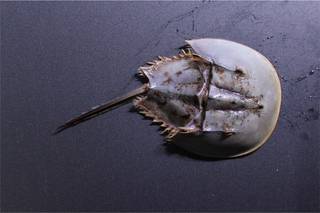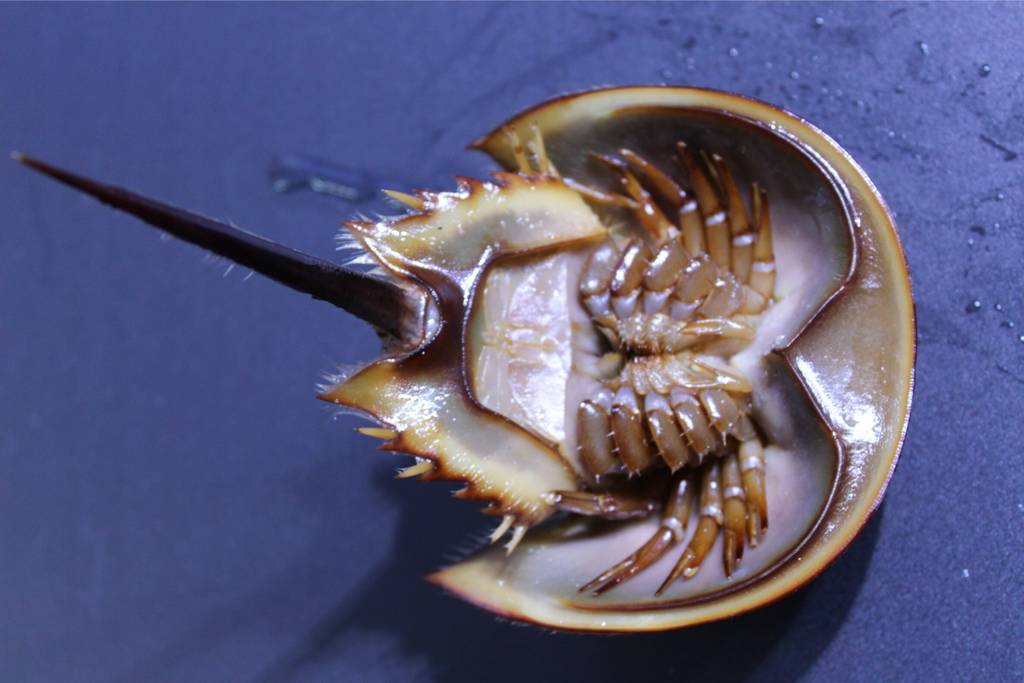This aquarium at the Jura-Museum is home to horseshoe crabs. They are known as “living fossils” because they have retained their external shape almost unchanged for 240 million years. Despite the many environmental changes, extinction events and the evolution of other organisms with which they coexisted throughout this time, their form and way of life appear to be a successful model. This means that fossil horseshoe crabs from the Jurassic period look almost the same.

§
Urheber: Alan Levine
https://www.flickr.com/photos/cogdog/6224395337/
Unchanged for 240 million years

§
© Andreas Hecker, Jura-Museum Eichstätt
Mesolimulus walchi from the Jurassic time

§
© Andreas Hecker, Jura-Museum Eichstätt
Limulus polyphemus lives in the Atlantic today – and here in the aquarium
Horseshoe crabs like to hide in the sand, which is probably why you don't see all of our specimens in the aquarium. With their compound eyes, which are located on the left and right of the front part of their body, they often peek out of the sand. The front body is flexibly connected with the rear body. The most mobile part is the tail spine, which is used for steering and turning around. By the way, it is not poisonous.
Horseshoe crabs are not picky about their food. They eat invertebrates and carrion that they find in the sand. Our animals eat pieces of shrimp and squid. The five pairs of pincer legs can crush the food and bring it to the mouth opening, which is located in the middle between the legs. This is where the food is sucked in. By the way: Did you know that horseshoe crabs are not actually crabs, but a separate group that is distantly related to spiders and scorpions?

§
© Andreas Hecker, Jura-Museum Eichstätt
Bottom side of a Horseshoe crab.
Horseshoe crabs breathe via gills on the back body, which is covered by the legs. With these leaf-shaped legs, horseshoe crabs can also swim, but they rarely do.
The tracks that we find in the Platy Limestones are made by the legs used for walking on the seabed. A particularly beautiful, long track and its creator can be found on the opposite wall next to the left small aquarium on the other side of the hall.
Horseshoe crabs are by no means the only “living fossils”. Find out which animals and plants are also among them!
See you again at the Jura Museum!
Dear guests, we hope you enjoyed the tour through our museum! We are gradually expanding our range of digital tours – so come and visit us again soon! Our museum also offers a variety of guided tours and workshops. Please check our homepage for more information https://www.jura-museum.de.
There is also a lot to discover at Willibald Castle and in the Altmühl Valley Nature Park. The next page will introduce you to the most important sights.